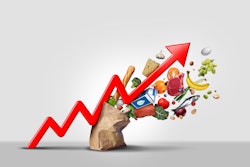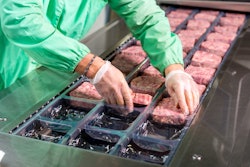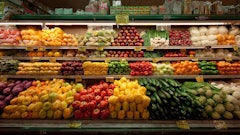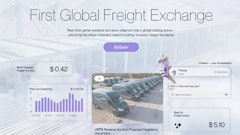
In the dynamic realm of food and beverage manufacturing, the aftermath of Black Friday often leaves operational efficiency hindered by inventory challenges. Striking the delicate balance between excess stock and stockouts remains elusive due to inaccurate predictions, compounded by outdated systems and hesitancy toward artificial intelligence (AI) adoption. The imperative need for transformative solutions is clear.
The challenge lies in navigating the complexities of accurate forecasting and production planning. The strategic embrace of AI-based forecast accuracy and production planning presents a transformative solution. By meticulously mapping inventory variables, leveraging predictive machine learning models, and overcoming adoption myths, the food and beverage industry can enhance accuracy and efficiency.
Embracing AI promises substantial reductions in inventory levels and expenses while mitigating stockouts. Anticipated outcomes include a 10-25% reduction in inventory levels, a 30-50% reduction in obsolete/expired product expenses, and a 20-45% reduction in stockouts. This transformative journey not only addresses post-Black Friday challenges but positions food and beverage manufacturers for sustained success in a rapidly evolving landscape. These transformative results have the added benefit of freeing up working capital, providing the financial flexibility necessary for ongoing innovation and adaptability.
Integrating AI into food and beverage data: A game-changer
The initial phase involves meticulously mapping variables influencing inventory formation within the food and beverage sector. Through data analysis, back-testing, and a comprehensive understanding of the unique challenges, manufacturers set the foundation for robust model development. This groundwork leads to improved data accuracy (potential reduction from 25-70% of the errors), a clearer comprehension of inventory influencers, and a defined roadmap for model development. These proven models play a pivotal role in predicting numerical values within specific time horizons. The adoption of predictive machine learning models becomes imperative for enhanced accuracy and the mitigation of uncertainties in forecasting, allowing for the simultaneous consideration of various variables influencing demand within the food and beverage landscape.
Despite the transformative potential, apprehension persists within the industry. Many companies mistakenly believe they are not prepared for such a shift, assuming their data structures are not mature enough. However, the reality often reveals a different picture. Companies in the food and beverage sector typically possess more data than they realize, and the incorporation of new data should be a planned initiative. Initiating this movement is crucial, even if initial maturity lags behind. Waiting for perceived maturity might result in missed opportunities and falling behind in the competitive food and beverage landscape.
Modeling the future: Transformative outcomes for food and beverage
The subsequent phase delves into modeling demand, distribution, and purchase planning specific to the food and beverage industry. Leveraging analytics and multi-segmentation, manufacturers engage in feature engineering, model development, and rigorous optimization and validation. This phase yields critical insights into future trends, fostering proactive decision-making. Anticipated outcomes include a reduction in food and beverage inventory levels, a reduction in obsolete/expired product expenses, and a reduction in stockouts.
With insights from the modeling phase, the third step involves a strategic reorganization of processes to align with optimal points for food and beverage manufacturers. This ensures the entire production ecosystem is calibrated to maximize efficiency, minimizing bottlenecks and streamlining operations. Outcomes include improved process efficiency, reduced operational bottlenecks, enhanced inventory policies, and streamlined production workflows specific to the food and beverage industry.
Simultaneously, the final phase encompasses pilot implementation sprints and structuring a comprehensive roll-out plan tailored to the food and beverage sector. This involves data ingestion, creating a robust model pipeline, and deploying the production model. By addressing critical questions regarding scalability, maintenance, replication, and continuous improvement, food and beverage manufacturers ensure a smooth transition from pilot to full-scale implementation.
A must-have for food and beverage manufacturing efficiency
In conclusion, the journey toward AI-driven inventory management is both a strategic imperative and a transformative opportunity for food and beverage manufacturers. Navigating each phase strategically and dispelling common adoption myths enables companies to overcome post-Black Friday challenges and achieve substantial reductions in food and beverage inventory levels, expenses, and stockouts. The integration of AI into food and beverage manufacturing processes is not just a one-time initiative but a commitment to continuous improvement and sustained efficiency. The future of food and beverage manufacturing efficiency lies in the hands of those willing to embrace AI and reap the rewards of sustained success in a rapidly evolving landscape.


















